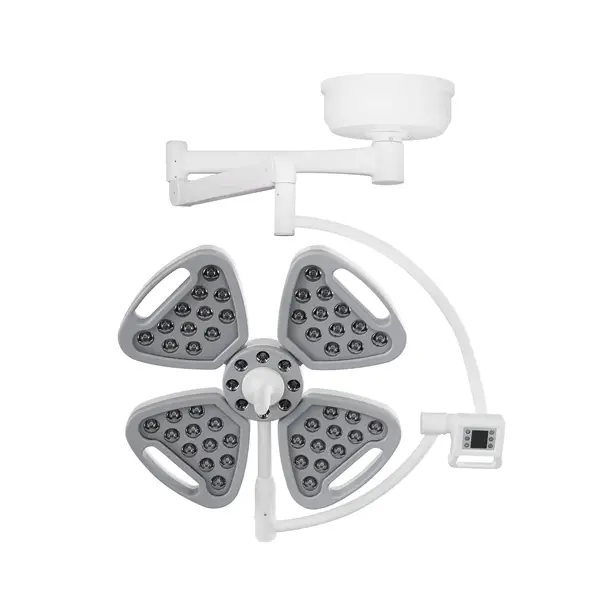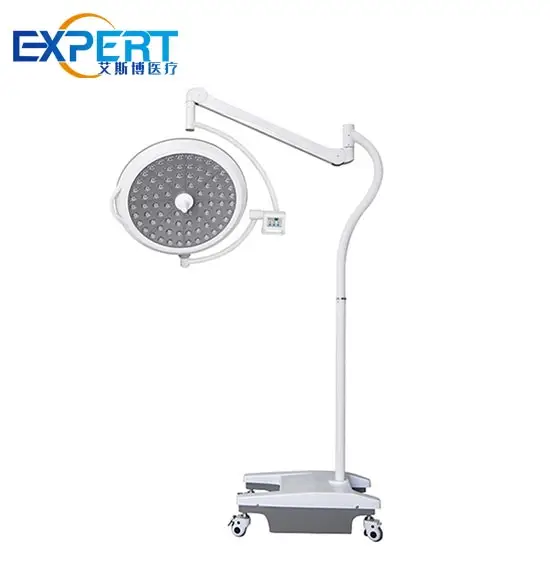Address
304 North Cardinal St.
Dorchester Center, MA 02124
Work Hours
Monday to Friday: 7AM - 7PM
Weekend: 10AM - 5PM
Address
304 North Cardinal St.
Dorchester Center, MA 02124
Work Hours
Monday to Friday: 7AM - 7PM
Weekend: 10AM - 5PM

This comprehensive guide will help you understand the key aspects to consider when selecting surgical light fixtures for your medical facility.
In modern medical settings, surgical light fixtures play a crucial role in ensuring that medical professionals have the optimal lighting required for precise and safe procedures. Choosing the right surgical light fixtures involves considering various factors such as illumination quality, shadow management, color rendering, and ease of use. This comprehensive guide will help you understand the key aspects to consider when selecting surgical light fixtures for your medical facility.

Surgical light fixtures are specialized lighting systems designed to provide high-intensity, focused light during surgical procedures. They are engineered to minimize shadows, offer excellent color rendering, and ensure consistent illumination to help surgeons and medical staff perform their tasks with precision.
The quality of lighting in the operating room directly impacts the success of surgical procedures. Proper surgical light fixtures ensure that surgeons can see clearly, distinguish between tissues, and perform surgeries with higher accuracy.
One of the primary factors to consider is the intensity of the light. Surgical light fixtures should provide high-intensity illumination to ensure that the surgical site is well-lit.
Uniform light distribution is essential to avoid areas of high and low illumination, which can cause visual fatigue and errors.
Modern surgical light fixtures are equipped with advanced shadow reduction technology to ensure that the surgical field remains evenly illuminated even when the surgeon’s hands or instruments block part of the light.
The Color Rendering Index (CRI) measures a light source’s ability to reveal the colors of various objects faithfully. Surgical light fixtures should have a high CRI to ensure that tissues and organs appear natural, aiding in accurate diagnosis and treatment.
The color temperature of the light, measured in Kelvin (K), affects how colors are perceived. Surgical light fixtures should have a color temperature that mimics natural daylight.
The flexibility to adjust the position and angle of the surgical light fixtures is crucial for optimal lighting during different procedures.
User-friendly controls and interfaces make it easier for medical staff to adjust lighting quickly and efficiently.
The build quality of surgical light fixtures impacts their longevity and performance. High-quality materials and construction ensure that the fixtures can withstand the demands of the operating room.
Consider the ease of maintenance and the availability of replacement parts. Surgical light fixtures should be easy to clean and maintain to ensure they remain in optimal working condition.

| Feature | Importance | Optimal Standard | Impact on Surgery |
|---|---|---|---|
| Light Intensity | Ensures sufficient illumination | 40,000 to 160,000 lux | Enhances visibility and precision |
| Uniformity | Reduces visual fatigue | Uniform light distribution | Prevents errors due to uneven lighting |
| Shadow Management | Maintains consistent lighting | Multi-source lighting, adjustability | Reduces shadows, enhances focus |
| Color Rendering Index | Accurate color representation | CRI above 90 | Better tissue differentiation |
| Color Temperature | Mimics natural daylight | 3,500K to 4,500K | Balanced, white light |
| Adjustability | Flexible positioning | 360-degree rotation | Optimal lighting for various procedures |
| Durability | Longevity and performance | High-quality materials | Withstands operating room demands |
| Maintenance | Easy to clean and maintain | Smooth surfaces, accessible parts | Ensures reliability and hygiene |
Choosing the best surgical light fixtures involves understanding the critical factors that impact their performance and suitability for various medical procedures. By focusing on illumination quality, shadow management, color rendering, ease of use, and durability, you can select fixtures that enhance the efficiency and safety of your operating room. Investing in high-quality surgical light fixtures is a step toward ensuring successful surgical outcomes and maintaining a high standard of care in your medical facility.
The different types of surgical light fixtures include LED surgical lights, halogen surgical lights, and hybrid systems. Each type offers distinct advantages in terms of energy efficiency, illumination quality, and maintenance requirements.
The Color Rendering Index (CRI) measures the accuracy of color representation under a light source. Surgical light fixtures with a high CRI (above 90) ensure that tissues and organs appear natural, aiding in accurate diagnosis and treatment.
Shadow management is crucial because shadows can obscure the surgical field and impede the surgeon’s visibility. Advanced shadow reduction technology in surgical light fixtures helps maintain consistent illumination, even when hands or instruments block part of the light.
Maintaining surgical light fixtures involves regular cleaning with appropriate disinfectants, checking for and replacing any faulty bulbs or LEDs, and ensuring that all adjustable parts are functioning correctly. Regular maintenance ensures optimal performance and longevity of the fixtures.
When selecting surgical light fixtures, consider factors such as light intensity, uniformity, shadow management, color rendering index, color temperature, adjustability, durability, and ease of maintenance. These factors will help ensure that you choose fixtures that provide the best possible lighting for surgical procedures.
LED surgical light fixtures are generally preferred over halogen ones due to their higher energy efficiency, longer lifespan, and better illumination quality. LEDs also generate less heat, which can be more comfortable for both the surgical team and the patient.
The optimal light intensity for surgical lights typically ranges from 40,000 to 160,000 lux. This range ensures sufficient illumination for detailed and precise surgical work, enhancing visibility and reducing the risk of errors.
Adjustability allows surgical lights to be positioned and angled precisely to provide optimal lighting for different procedures. Features like articulated arms and 360-degree rotation enhance flexibility and ensure that the surgical field is well-lit from various angles.
Uniform light distribution is important because it prevents areas of high and low illumination, which can cause visual fatigue and reduce the accuracy of surgical procedures. Consistent lighting across the surgical field enhances visibility and reduces the likelihood of errors.
Color temperature and CRI work together to provide lighting that closely mimics natural daylight. A color temperature between 3,500K and 4,500K combined with a high CRI (above 90) ensures that colors are rendered accurately and tissues appear as they would under natural light, aiding in precise surgical work.